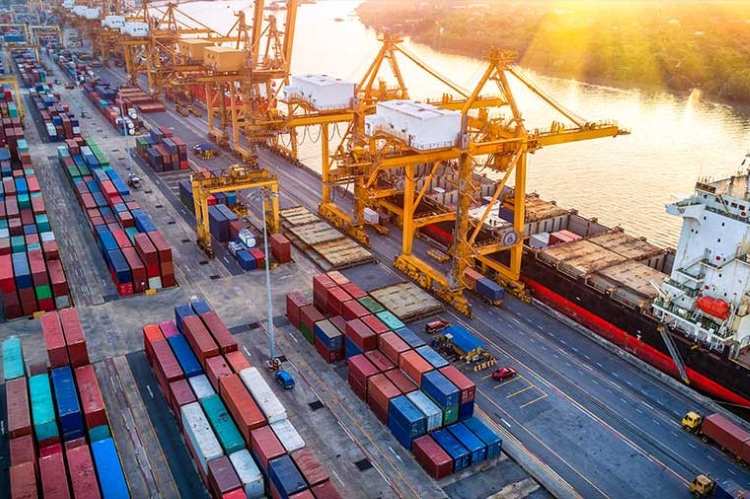In an increasingly protectionist global trade environment, countries are revisiting existing pacts to secure national interests. India, too, is taking stock of its bilateral and multilateral trade commitments. High on the agenda is the revision of the ASEAN-India Trade in Goods Agreement, which has long drawn criticism in New Delhi for disproportionately favouring the 10-member Southeast Asian bloc.
At the heart of India’s dissatisfaction lies a deepening trade imbalance. Since the implementation of AITIGA in 2010, Indian exports to ASEAN have grown 65%, from $26.6 billion in FY11 to $44 billion in FY23. However, imports from ASEAN surged by a staggering 186% during the same period—from $30.6 billion to $87.5 billion—widening the trade deficit substantially. In FY24, India’s exports to ASEAN stood at $32.7 billion, while imports were almost double at $66.5 billion.
The imbalance is not a statistical aberration. Five ASEAN countries—Indonesia, Singapore, Malaysia, Thailand, and Vietnam—account for over 90% of India’s trade with the bloc, indicating that benefits of the agreement are highly concentrated and skewed. India believes the current structure facilitates access for ASEAN manufacturers without offering comparable openings for Indian producers, especially in high-barrier sectors like electronics and steel.
READ I India needs to invest more in human capital
Unfair terms, unequal openings
Commerce and Industry Minister Piyush Goyal has been forthright in describing the agreement as “ill-conceived” and “unfair” to Indian industry. One of India’s main contentions is the asymmetry in tariff liberalisation. While India opened 71% of its tariff lines under AITIGA, countries like Indonesia (41%), Vietnam (66.5%), and Thailand (67%) offered far less, despite having higher per capita incomes.
The imbalance is compounded by structural differences. ASEAN economies are primarily export-driven and enjoy strong manufacturing ecosystems. India’s economy, by contrast, is diversified with strengths in services and agriculture—sectors that have not sufficiently benefited from the agreement. India’s limited penetration into ASEAN markets reflects this underlying asymmetry.
Adding to the concerns is the alleged misuse of the agreement to re-route Chinese goods into India. Goyal has criticised the lax implementation of “rules of origin,” arguing that Chinese firms exploit the FTA by routing products through ASEAN countries to enjoy tariff concessions, bypassing India’s trade barriers.
Need for revising the decade-old pact
Signed in 2009 as part of a larger Comprehensive Economic Cooperation Agreement (CECA), AITIGA has not undergone a meaningful review in over a decade. Unlike other FTAs, which include periodic review clauses, the ASEAN bloc has failed to adequately address Indian concerns, leading to frustration in New Delhi. The deal’s age and its failure to keep pace with changing economic realities have especially hurt micro, small, and medium enterprises (MSMEs), which struggle to compete with cheaper and often more efficiently produced ASEAN imports.
ASEAN countries agreed in 2019 to renegotiate the deal, and nine rounds of talks have taken place since. Yet progress has been slow. With a 2025-end deadline looming, the need for accelerated negotiation is pressing.
A country-specific approach to imbalance
Recognising the varied levels of development among ASEAN members and the absence of a unified customs union, India has proposed a country-wise review of the agreement. This pragmatic shift allows New Delhi to tailor its approach, factoring in each country’s current trade dynamics and development stage. This strategy also acknowledges that bilateral trade positions have evolved since 2010 and that a one-size-fits-all solution is no longer tenable.
Indian industries have raised alarms about surging imports—especially in sectors like steel and electronics—where domestic manufacturers face non-reciprocal barriers. Exporters have also flagged non-tariff impediments such as stringent import regulations and quota systems that disproportionately affect Indian goods.
Strengthening safeguards and rules of origin
A central Indian demand is the strengthening of rules of origin to prevent misuse of preferential tariffs. Investigations by Indian authorities into dumping cases have revealed that many ASEAN exports are significantly subsidised at the input stage—often by Chinese producers—making it difficult to track distortions at the point of export. Without stringent safeguards, the intent of the agreement is undermined.
The revised agreement must therefore incorporate stricter rules of origin, ensuring that only goods with genuine ASEAN value addition qualify for preferential access. This reform alone could stem the influx of third-country products and restore some measure of parity to India’s trade relationship with the region.
India is not seeking to tear up the agreement but to rebalance it. As trade patterns evolve and domestic industries face rising pressure, trade agreements too must adapt. The ASEAN bloc, for its part, should recognise that sustaining a durable economic partnership requires mutual benefit. India’s push for a modernised and equitable FTA is both legitimate and long overdue.
If ASEAN addresses concerns around tariff asymmetries, rules of origin, and non-tariff barriers, the revised agreement could provide the basis for a more balanced and future-ready partnership. With limited time left to complete the review, the coming months will be a test of both sides’ commitment to economic cooperation over convenience.

